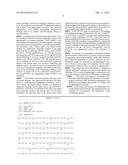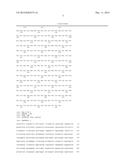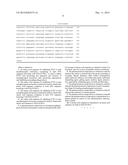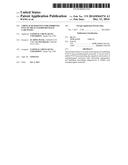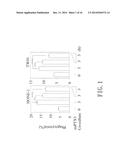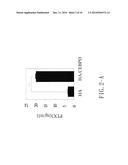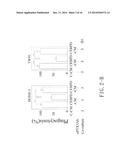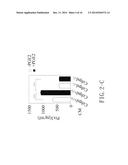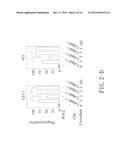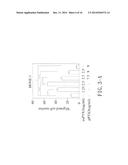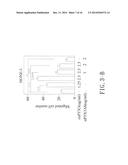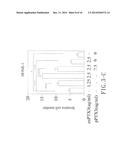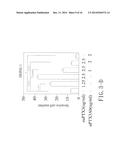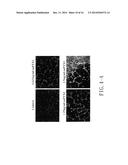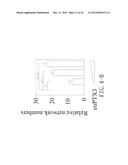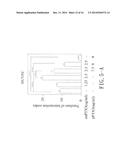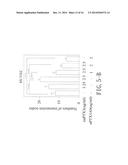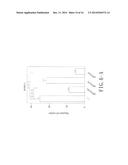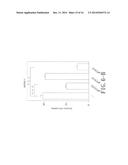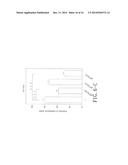Patent application title: AMINO ACID SEQUENCE FOR INHIBITING PTX3 TO TREAT NASOPHARYNGEAL CARCINOMA
Inventors:
Ju-Ming Wang (Tainan City, TW)
Yu-Wei Hsiao (Tainan City, TW)
Assignees:
NATIONAL CHENG KUNG UNIVERSITY
IPC8 Class: AC07K14435FI
USPC Class:
514 193
Class name: Peptide (e.g., protein, etc.) containing doai neoplastic condition affecting cancer
Publication date: 2014-12-11
Patent application number: 20140364374
Abstract:
The invention relates to an amino acid sequence for inhibiting PTX3 to
treat nasopharyngeal carcinoma. It can be used to inhibit PTX3 from
promoting the migration and invasion of nasopharyngeal carcinoma cells,
promoting angiogenesis and inhibiting macrophage phagocytosis to further
treat nasopharyngeal carcinoma.Claims:
1. An amino acid sequence for inhibiting PTX3 to treat nasopharyngeal
carcinoma, comprising at least 85% sequence homology with SEQ ID NO:1, is
used to inhibit PTX3 from promoting the migration and invasion of
nasopharyngeal carcinoma cells, promoting angiogenesis and inhibiting
macrophage phagocytosis.
2. The amino acid sequence for inhibiting PTX3 to treat nasopharyngeal carcinoma as claimed in claim 1, wherein the amino acid sequence comprises at least 90% sequence homology with SEQ ID NO:1.
3. The amino acid sequence for inhibiting PTX3 to treat nasopharyngeal carcinoma as claimed in claim 2, wherein the amino acid sequence comprises at least 95% sequence homology with SEQ ID NO:1.
4. The amino acid sequence for inhibiting PTX3 to treat nasopharyngeal carcinoma as claimed in claim 3, wherein the amino acid sequence is SEQ ID NO:1.
5. A pharmaceutical composition for treating nasopharyngeal carcinoma in mammals, comprises therapeutically effective dosage of amino acid sequence as claimed in claim 1 in treatment, and one or more acceptable carriers in medicine.
6. The pharmaceutical composition as claimed in claim 5, wherein the carrier is selected from the group consisting of excipient, diluent, thickener, filler, binder, disintegration agent, lubricant, sebum or non-sebum base agent, surfactant, suspending agent, gelling agent, auxiliary agent, preservative, antioxidant, stabilizing agent, colorant and flavoring.
7. The pharmaceutical composition as claimed in claim 5, wherein the pharmaceutical composition is used to manufacture drugs for treating nasopharyngeal carcinoma.
8. The pharmaceutical composition as claimed in claim 5, wherein the mammal is a human patient.
9. The pharmaceutical composition as claimed in claim 8, wherein the pharmaceutical composition is administered to a human patient by means of oral administration, injection, daub or patch.
10. A nuclear acid sequence is translated to an amino acid sequence set forth in SEQ ID NO:1.
Description:
BACKGROUND OF THE INVENTION
[0001] 1. Field of the Invention
[0002] The present invention relates to an amino acid sequence for inhibiting PTX3 to treat nasopharyngeal carcinoma (NPC), more particularly for inhibition of PTX3 from promoting the migration and invasion of nasopharyngeal carcinoma cells, promoting angiogenesis and inhibiting macrophage phagocytosis to further treat nasopharyngeal carcinoma.
[0003] 2. Description of Related Art
[0004] Many researches reported that acute inflammation increases the probabilities of normal cells to become tumorigenic and enhances the occurring rate of cancer cell migration and invasion. Tumor-associated macrophages (TAM) are the most abundant immune cells within the tumor stroma and are required for a number of functions important for tumor progression, such as promoting tumor cell proliferation, angiogenesis, incessant matrix turnover and repressing the adaptive immune responses. Clinical investigations have shown that high levels of macrophage infiltration into tumors are associated with a poor prognosis.
[0005] PTX3 is a long pentraxin protein, whose mechanism of action is under study. In osteoblasts, prostaglandin E2 (PGE2) increases the translocation of transcription factor CCAAT/enhancer binding protein delta (CEBPD) from cytoplasm to nucleus by activating protein kinase A to result in an increased expression of insulin-like growth factor (IGF-1). A high expression level of CEBPD in inflammation indicates that CEBPD and its downstream target proteins play important roles in inflammation. In astrocytes, an increase of CEBPD is able to activate PTX3 protein to suppress the phagocytosis of damaged cells by macrophage, in relation to age-associated disorder, e.g. Alzheimer's disease. As such, most of prior arts disclosed the relation of CEBPD to PTX3 associated mechanisms. Nasopharyngeal carcinoma represents a unique tumor microenvironment where the epithelial tumor cells are surrounded by abundant infiltrating immune cells. During tumorigenesis, tumors can adapt to evade immunosurveillance by altering the properties and functions of the host's stromal and/or immune cells.
[0006] The invention connects PTX3 to tumor-associated macrophages and nasopharyngeal carcinoma. It suggests that PTX3 has abilities of promoting the migration of nasopharyngeal carcinoma cells and angiogenesis, and abilities of inhibiting macrophage phagocytosis, whereas PTX3 antibody and recombinant PTX3 protein of prokaryotes can inhibit the function as described above. Thus, an amino acid sequence for treating nasopharyngeal carcinoma has been developed in view of this novel finding and convenience of application.
SUMMARY OF THE INVENTION
[0007] In view of the above-mentioned problems, the object of the present invention is to provide an amino acid sequence which can be used to inhibit PTX3 from promoting the migration and invasion of nasopharyngeal carcinoma cells, from promoting angiogenesis and from inhibiting macrophage phagocytosis to treat nasopharyngeal carcinoma.
[0008] Disclosed herein is an amino acid sequence for inhibiting PTX3 to treat nasopharyngeal carcinoma by decreasing the migration and invasion of nasopharyngeal carcinoma cells, inhibiting angiogenesis and promoting macrophage phagocytosis.
[0009] An amino acid sequence for inhibiting PTX3 to treat nasopharyngeal carcinoma, comprising at least 85% sequence homology of SEQ ID NO:1, can be used to inhibit PTX3 from promoting the migration and invasion of nasopharyngeal carcinoma cells, promoting angiogenesis and inhibiting macrophage phagocytosis. In the foregoing description, the amino acid sequence has at least 90% sequence homology, such as at least 95% homology or 100% homology, with SEQ ID NO:1.
[0010] A pharmaceutical composition used to manufacture drugs for treating nasopharyngeal carcinoma in mammals, such as human patient, is further provided, comprising therapeutically therapeutically effective dosage of amino acid sequence as described above in treatment, and one or more acceptable carriers in medicine. The carrier is selected from the group consisting of excipient, diluent, thickener, filler, binder, disintegration agent, lubricant, sebum or non-sebum base agent, surfactant, suspending agent, gelling agent, auxiliary agent, preservative, antioxidant, stabilizing agent, colorant and flavoring. Moreover, the pharmaceutical composition can be administered to a human patient by means of oral administration, injection, daub, or patch.
[0011] According to an embodiment of the present invention, a nuclear acid sequence which can be translated into an amino acid sequence such as one including an amino acid sequence of SEQ ID NO:1 is further provided.
BRIEF DESCRIPTION OF THE DRAWINGS
[0012] FIG. 1 is a diagram showing the effect of euPTX3 purified from mammals on macrophage phagocytosis activity.
[0013] FIG. 2-A is a diagram showing that PTX3 is increased in the conditioned medium of CEBPD-expressing THP-1 cells.
[0014] FIG. 2-B is a diagram showing that PTX3 antibody inhibits CEBPD-suppressed phagocytosis of cancer cells by activated macrophages.
[0015] FIG. 2-C is a diagram showing that Ptx3 is attenuated in PGE2-treated mouse Cebpd-/- bone marrow cells.
[0016] FIG. 2-D is a diagram showing that the conditioned medium of Cebpd+/+ macrophages attenuates LLC1 or 4T1 cells phagocytosed by activated mouse macrophages.
[0017] FIG. 3-A is a diagram showing that recombinant pPTX3 can inhibit recombinant euPTX3-induced migration of cancer cells.
[0018] FIG. 3-B is a diagram showing that PTX3 antibody inhibits euPTX3-induced migration of cancer cells.
[0019] FIG. 3-C is a diagram showing that pPTX3 can inhibit euPTX3-induced invasion of cancer cells.
[0020] FIG. 3-D is a diagram showing that PTX3 antibody inhibits euPTX3-induced invasion of cancer cells.
[0021] FIG. 4-A is a diagram showing the effect of euPTX3 on angiogenesis.
[0022] FIG. 4-B is a diagram showing that euPTX3 promotes angiogenesis.
[0023] FIG. 5-A is a diagram showing that recombinant pPTX3 can inhibit recombinant euPTX3-induced tube formation of HUVEC cells.
[0024] FIG. 5-B PTX3 antibody inhibits euPTX3-induced tube formation of HUVEC.
[0025] FIG. 6-A is a diagram showing that the recombinant pPTX3 (PTX3(pFL)), but not C-terminal truncation of pPTX3 (PTX3(N)), can inhibit HONE-1 cell migration.
[0026] FIG. 6-B is a diagram showing that the recombinant pPTX3 (PTX3(pFL)), but not C-terminal truncation of pPTX3 (PTX3(N)), can inhibit HONE-1 cell invasion.
[0027] FIG. 6-C is a diagram showing that the recombinant pPTX3 (PTX3(pFL)), but not C-terminal truncation of pPTX3 (PTX3(N)), can reduce tube formation of HUVEC.
DETAILED DESCRIPTION OF THE PREFERRED EMBODIMENT
[0028] An amino acid sequence for inhibiting PTX3 to treat nasopharyngeal carcinoma is disclosed, which comprises at least 85% sequence homology of SEQ ID NO:1 and can be used to inhibit PTX3 from promoting the migration and invasion of nasopharyngeal carcinoma cells, promoting angiogenesis and inhibiting macrophage phagocytosis. The amino acid sequence has at least 90% sequence homology, such as at least 95% homology or 100% homology, with SEQ ID NO:1.
[0029] A pharmaceutical composition for treating nasopharyngeal carcinoma in mammals, comprises therapeutically effective dosage of amino acid sequence and one or more acceptable carriers in medicine. The mammal is a human patient. Moreover, the carrier is selected from the group consisting of excipient, diluent, thickener, filler, binder, disintegration agent, lubricant, sebum or non-sebum base agent, surfactant, suspending agent, gelling agent, auxiliary agent, preservative, antioxidant, stabilizing agent, colorant and flavoring.
[0030] It is noted that the pharmaceutical composition is used to manufacture drugs for treating nasopharyngeal carcinoma. The foregoing pharmaceutical composition is administered to a human patient by means of oral administration, injection, daub or patch. In addition, a nuclear acid sequence can be translated into an amino acid sequence such as one including an amino acid sequence of SEQ ID NO:1.
[0031] Hereinafter, an exemplary embodiment of the present invention will be described in detail with reference to the accompanying drawings.
[0032] The human monocyte cell line, THP-1 cell, shares many properties with human monocyte-purified macrophages and is used as a model to study immune responses in vitro. Moreover, phorbol 12-myristate 13-acetate (PMA)-differentiated THP-1 macrophages and macrophage colony-stimulating factor (M-CSF)-treated mouse primary macrophages have been suggested to have tumor-associated macrophages (TAM) characteristics. The primary amino acid sequence of PTX3 is all highly conserved between mice and humans.
EXAMPLE 1
Cell Culture and Treatment
[0033] Different cell lines including THP-1, NPC-TW01 [TW01] and HONE-1 were cultured in RPMI-1640 medium (Hyclone) containing 10% fetal bovine serum (FBS), 100 μg/ml streptomycin, and 100 units/ml penicillin. A mouse lung cancer cell line LLC1 was maintained in DMEM medium supplemented with 10% FBS, 100 μg/ml streptomycin and 100 units/ml penicillin. Mouse bone marrow mononuclear cells were obtained from the femur and tibia of mice and grown in RPMI-1640 medium containing 10% FBS and 25 ng/mL M-CSF (R&D systems Inc.). For mouse macrophage differentiation, mouse bone marrow mononuclear cells were grown in medium containing M-CSF and allowed to adhere. The adherent bone marrow-purified macrophages were then re-seeded in RPMI-1640 medium with 10% FBS. In this study, the dosage of PGE2 (Sigma) applied in every treatment is 15 ng/ml.
EXAMPLE 2
Phagocytosis Assay of euPTX3 Purified from Mammals
[0034] HONE-1 or TW01 were stained with a PKH-26 red fluorescent cell linker kit (Sigma) according to the manufacturer's instructions. 5×104 PKH-26-stained NPC cells were then treated with 300 and 600 ng/ml euPTX3 (purified from eukaryotic mouse myeloma cells, R&D Systems Inc.) or conditioned medium. After removing the PTX3 protein or conditioned medium, the experimental cells were reseeded and co-cultured with PMA-treated PKH-67-stained THP-1 cells for 3 h (the human monocyte cell line, THP-1 cells, can differentiate to macrophages by treating with PMA) and fluorescence signals were analyzed by flow cytometry. Phagocytosis activity was expressed as the percentage of green.sup.+/red.sup.+ dual-fluorescent cells in the fluorescein isothiocyanate (FITC.sup.+) single-fluorescent cell population. The results as shown in FIG. 1, euPTX3 attenuates NPC cells (HONE-1 and TW01) phagocytosed by activated macrophages. Furthermore, the level of attenuation is directly proportional to the increasing concentration of euPTX3.
EXAMPLE 3
Analyzing the Effect of PTX3/Ptx3 Purified from Mammals on Macrophage Phagocytosis Activity
[0035] At first, the conditional media were harvested from 1×106 stable THP-1 cells (with pCDNA3/HA backbone vector) or 1×106 stable CEBPD-expressing THP-1 cells (with pCDNA3/HA-CEBPD vector). The secreted PTX3 in conditioned media of above experimental cells were detected by human PTX3 ELISA Kit (R&D systems Inc.). As shown in FIG. 2-A, PTX3 is increased in the conditioned medium of CEBPD-expressing THP-1 cells.
[0036] After neutralizing PTX3 in conditioned medium with 1 ug/ml control antibody or PTX3 antibody (ab90807, Abcam) for 4 hours, 5×104 HONE-1 or 5×104 TW01 cells were co-cultured with PMA-treated PKH-67-stained THP-1 cells in above neutralized conditioned media for 3 hours. Phagocytosis activity was analyzed and expressed as the percentage of green.sup.+/red.sup.+ dual-fluorescent cells in the FITC.sup.+ single-fluorescent cell population. As shown in FIG. 2-B, PTX3 antibody inhibits CEBPD-suppressed macrophage phagocytosis of cancer cells by activated macrophages.
[0037] The bone marrow mononuclear cells cells were obtained from the femur and tibia of C57BL/6 mice. For mouse macrophage differentiation, bone marrow cells were grown in RPMI-1640 medium (Hyclone) with 10% FBS (Gibco) and 25 ng/ml M-CSF (R&D systems Inc.). The adherent bone marrow-purified macrophages were then re-seeded in RPMI-1640 medium with 10% FBS and treated with or without 15 ng/ml PGE2 (Sigma) for 6 hours. After replacement with fresh RPMI-1640 medium and extra 24-h growth, the conditioned medium was harvested for detecting the Ptx3 level by a Ptx3 ELISA kit (R&D systems Inc.). As shown in FIG. 2-C, the conditioned media harvested form Cebpd+/+ or Cebpd-/- macrophages with or without PGE2 treatment. The level of PTX3 increased via CEBPD after PGE2 treatment in the conditioned media harvested from Cebpd+/+ macrophages, whereas the level of PTX3 wasn't affected by PGE2 treatment in the conditioned media harvested from Cebpd-/- macrophages.
[0038] Finally, 5×104 LLC1 or 5×104 breast cancer cell line 4T1 cells (labeled by PKH-26) co-cultured with activated mouse macrophages (labeled by PKH-67) in conditioned media for 3 hours. Phagocytosis activity was analyzed and expressed as the percentage of green.sup.+/red.sup.+ dual-fluorescent cells in the FITC single-fluorescent cell population. As shown in FIG. 2-D, the level of PTX3 increased via CEBPD after PGE2 treatment in the conditioned media harvested from Cebpd+/+ macrophages, which can attenuate LLC1 or 4T1 cells phagocytosed by activated mouse macrophages.
[0039] In summary, PTX3/Ptx3 purified from mammals contributes to the suppression of nasopharyngeal carcinoma cells phagocytosed by activated macrophages.
EXAMPLE 4
Analyzing the Effect of PTX3 on Nasopharyngeal Carcinoma Cells Migration and Invasion
[0040] 3×104 HONE-1 cells were seeded in the upper layer of boyden chamber. The upper and bottom layer was separated by a polyethylene terephthalate membrane. After 3 hours culture, the regular culture medium was replaced by serum-free medium in the upper layer, and the euPTX3 or pPTX3 as indicated amount in FIG. 3-A were added with serum-free media in the bottom layer. For 24 hours incubation, the migrated cells in the bottom layer were detected by 4',6-diamidino-2-phenylindole (DAPI, Invitrogen). Activity of cell migration (migrated cell number) was calculated as the percentage of the fluorescence relative to the controls. As shown in FIG. 3-A, increased euPTX3 resulted in the increase of HONE-1 migration, whereas increased pPTX3 inhibited euPTX3-induced migration of HONE-1. That is, recombinant pPTX3 can inhibit recombinant euPTX3-induced migration of nasopharyngeal carcinoma cells.
[0041] 3×104 HONE-1 cells were seeded in the upper layer of boyden chamber. The upper and bottom layer was separated by a polyethylene terephthalate membrane. After 3 hours culture, the regular culture medium was replaced by serum-free medium in the upper layer, and the euPTX3 with or without binding PTX3 antibody as indicated in FIG. 3-B were added with serum-free media in the bottom layer. For 24 hours incubation, the migrated cells in the bottom layer were detected by DAPI. Activity of cell migration (migrated cell number) was calculated as the percentage of the fluorescence relative to the controls. As shown in FIG. 3-B, PTX3 antibody inhibits euPTX3-induced migration of HONE-1.
[0042] 3×104 HONE-1 cells were seeded in the upper layer of boyden chamber. The upper and bottom layer was separated by a matrigel (BD Biosciences)-coated polyethylene terephthalate membrane. After 3 hours culture, the regular culture medium was replaced by serum-free medium in the upper layer and the euPTX3 or pPTX3 as indicated in FIG. 3-C were added with serum-free media in the bottom layer. For 24 hours incubation, the migrated cells in the bottom layer were detected by DAPI. Activity of cell invasion (invasive cell number) was calculated as the percentage of the fluorescence relative to the controls. As shown in FIG. 3-C, pPTX3 inhibits euPTX3-induced invasion of cancer cells.
[0043] 3×104 HONE-1 cells were seeded in the upper layer of boyden chamber. The upper and bottom layer was separated by a polyethylene terephthalate membrane. After 3 hours culture, the regular culture medium was replaced by serum-free medium in the upper layer, and the euPTX3 with or without binding PTX3 antibody as indicated in FIG. 3-D were added with serum-free media in the bottom layer. For 24 hours incubation, the migrated cells in the bottom layer were detected by DAPI. Activity of cell invasion was calculated as the percentage of the fluorescence relative to the controls. As shown in FIG. 3-D, PTX3 antibody inhibits euPTX3-induced invasion of cancer cells.
[0044] In summary, pPTX3 protein can inhibit euPTX3-induced migration and invasion of nasopharyngeal carcinoma cells.
EXAMPLE 5
Analyzing the Effect of euPTX3 on Angiogenesis
[0045] 2×104 human umbilical vein endothelial Cells (HUVEC) grew in serum-free ECM medium (ScienCell) with indicated amounts (as indicated in FIG. 4-A) of euPTX3 on pre-coated matrigel plates. After 12 hours incubation, the experimental cells were fixed with 4% paraformaldehyde for observation of the tube-formation morphology. Tube-like structures were quantified by counting the number of intersections between branches of endothelial cell networks (relative network numbers) in the whole field. Each condition in this experiment was repeated at least three times. The results as shown in FIG. 4-A and FIG. 4-B, euPTX3 promotes angiogenesis.
EXAMPLE 6
Analyzing the Effect of PTX3 on Angiogenesis
[0046] 2×104 HUVEC grew in serum-free ECM medium with indicated amounts (as indicated in FIG. 5-A) of euPTX3 or pPTX3 on pre-coated matrigel plates. After 12 hours incubation, HUVEC were fixed with 4% paraformaldehyde for observation of the tube-formation morphology. Tube-like structures were quantified by counting the number of intersections between branches of endothelial cell networks (number of intersection nodes) in the whole field. As shown in FIG. 5-A, recombinant pPTX3 can inhibit recombinant euPTX3-induced tube formation of HUVEC cells.
[0047] 2×104 HUVEC grew in serum-free ECM medium with indicated amounts of euPTX3 on pre-coated matrigel plates. The euPTX3 with or without binding PTX3 antibody as indicated in FIG. 5-B were added with serum-free media. After 12 hours incubation, HUVEC were fixed with 4% paraformaldehyde for observation of the tube-formation morphology. Tube-like structures were quantified by counting the number of intersections between branches of endothelial cell networks in the whole field. As shown in FIG. 5-B, PTX3 antibody inhibits euPTX3-induced tube formation of HUVEC.
EXAMPLE 7
Identifying Functional Domain of pPTX3 Involved in Migration, Invasion and Angiogenesis
[0048] Above results infer that pPTX3 plays an opposite role from euPTX3, however the detailed mechanism remains elusive (perhaps involved in competitive binding or glycation). The results also show that euPTX3 promotes migration and invasion of nasopharyngeal carcinoma cells, promotes angiogenesis, and inhibits macrophage phagocytosis, whereas pPTX3 can inhibit euPTX3-induced effects as described above.
[0049] Continued from the preceding experiments, functional domain of pPTX3 involved in migration, invasion and angiogenesis was further identified. 3×104 HONE-1 cells were seeded in the upper layer of boyden chamber. The upper and bottom layer was separated by a polyethylene terephthalate membrane. After 3 hours culture, the regular culture medium was replaced by serum-free medium in the upper layer, and the recombinant pPTX3 (amino acids 18-381, pPTX3/FL, 225 nM, purified from E. coli, Abeam), N-terminal truncation of pPTX3 (amino acids 19-182, pPTX3/N, 225 nM, purified from E. coli) or C-terminal truncation of pPTX3 (amino acids 180-381, pPTX3/C, 225 nM, purified from E. coli) as indicated in FIG. 6-A were added with serum-free media in the bottom layer. For 24 hours incubation, the migrated cells in the bottom layer were detected by DAPI. Activity of cell migration (migrated cell number) was calculated as the percentage of the fluorescence relative to the controls. As shown in FIG. 6-A, pPTX3/FL and pPTX3/C, but not pPTX3/N, can significantly inhibit HONE-1 cell migration.
[0050] 3×104 HONE-1 cells were seeded in the upper layer of boyden chamber. The upper and bottom layer was separated by a polyethylene terephthalate membrane. After 3 hours culture, the regular culture medium was replaced by serum-free medium in the upper layer, and pPTX3/FL, pPTX3/N, or pPTX3/C as indicated in FIG. 6-B were added with serum-free media in the bottom layer. For 24 hours incubation, the migrated cells in the bottom layer were detected by DAPI. Activity of cell invasion was calculated as the percentage of the fluorescence relative to the controls. As shown in FIG. 6-B, pPTX3/FL and pPTX3/C, but not pPTX3/N, can significantly inhibit HONE-1 cell invasion.
[0051] 2×104 HUVEC grew in serum-free ECM medium with indicated amounts (as indicated in FIG. 6-C) of pPTX3/FL, pPTX3/N, or pPTX3/C on pre-coated matrigel plates. After 12 hours incubation, HUVEC were fixed with 4% paraformaldehyde for observation of the tube-formation morphology. Tube-like structures were quantified by counting the number of intersections between branches of endothelial cell networks (number of intersection nodes) in the whole field. As shown in FIG. 6-C, pPTX3/FL and pPTX3/C, but not pPTX3/N, can significantly reduce tube formation of HUVEC.
[0052] In summary, as an exemplary embodiment, pPTX3 disclosed herein is SEQ ID NO:1 as claim, which can inhibit the migration and invasion of HONE-1 cells (NPC cell lines) and reduce tube formation of HUVEC, and thus can be a therapeutic target for treatment of nasopharyngeal carcinoma. Moreover, the nuclear acid sequence and the amino acid sequence of SEQ ID NO:1 are shown in sequence list.
[0053] According to the above description, in comparison with the traditional technique, an amino acid sequence for inhibiting PTX3 to treat nasopharyngeal carcinoma according to the present invention has the advantages as following:
[0054] 1. The amino acid sequence can inhibit PTX3 from promoting the migration and invasion of nasopharyngeal carcinoma cells, promoting angiogenesis, and inhibiting macrophage phagocytosis to further treat nasopharyngeal carcinoma.
[0055] 2. The amino acid sequence for inhibiting PTX3 can be further used in industry and manufactured by the methods of overexpression and purification of the recombinant protein.
Sequence CWU
1
1
21381PRTHomo sapiens 1Met His Leu Leu Ala Ile Leu Phe Cys Ala Leu Trp Ser
Ala Val Leu 1 5 10 15
Ala Glu Asn Ser Asp Asp Tyr Asp Leu Met Tyr Val Asn Leu Asp Asn
20 25 30 Glu Ile Asp Asn
Gly Leu His Pro Thr Glu Asp Pro Thr Pro Cys Ala 35
40 45 Cys Gly Gln Glu His Ser Glu Trp Asp
Lys Leu Phe Ile Met Leu Glu 50 55
60 Asn Ser Gln Met Arg Glu Arg Met Leu Leu Gln Ala Thr
Asp Asp Val 65 70 75
80 Leu Arg Gly Glu Leu Gln Arg Leu Arg Glu Glu Leu Gly Arg Leu Ala
85 90 95 Glu Ser Leu Ala
Arg Pro Cys Ala Pro Gly Ala Pro Ala Glu Ala Arg 100
105 110 Leu Thr Ser Ala Leu Asp Glu Leu Leu
Gln Ala Thr Arg Asp Ala Gly 115 120
125 Arg Arg Leu Ala Arg Met Glu Gly Ala Glu Ala Gln Arg Pro
Glu Glu 130 135 140
Ala Gly Arg Ala Leu Ala Ala Val Leu Glu Glu Leu Arg Gln Thr Arg 145
150 155 160 Ala Asp Leu His Ala
Val Gln Gly Trp Ala Ala Arg Ser Trp Leu Pro 165
170 175 Ala Gly Cys Glu Thr Ala Ile Leu Phe Pro
Met Arg Ser Lys Lys Ile 180 185
190 Phe Gly Ser Val His Pro Val Arg Pro Met Arg Leu Glu Ser Phe
Ser 195 200 205 Ala
Cys Ile Trp Val Lys Ala Thr Asp Val Leu Asn Lys Thr Ile Leu 210
215 220 Phe Ser Tyr Gly Thr Lys
Arg Asn Pro Tyr Glu Ile Gln Leu Tyr Leu 225 230
235 240 Ser Tyr Gln Ser Ile Val Phe Val Val Gly Gly
Glu Glu Asn Lys Leu 245 250
255 Val Ala Glu Ala Met Val Ser Leu Gly Arg Trp Thr His Leu Cys Gly
260 265 270 Thr Trp
Asn Ser Glu Glu Gly Leu Thr Ser Leu Trp Val Asn Gly Glu 275
280 285 Leu Ala Ala Thr Thr Val Glu
Met Ala Thr Gly His Ile Val Pro Glu 290 295
300 Gly Gly Ile Leu Gln Ile Gly Gln Glu Lys Asn Gly
Cys Cys Val Gly 305 310 315
320 Gly Gly Phe Asp Glu Thr Leu Ala Phe Ser Gly Arg Leu Thr Gly Phe
325 330 335 Asn Ile Trp
Asp Ser Val Leu Ser Asn Glu Glu Ile Arg Glu Thr Gly 340
345 350 Gly Ala Glu Ser Cys His Ile Arg
Gly Asn Ile Val Gly Trp Gly Val 355 360
365 Thr Glu Ile Gln Pro His Gly Gly Ala Gln Tyr Val Ser
370 375 380 21146DNAHomo sapiens
2atgcatctcc ttgcgattct gttttgtgct ctctggtctg cagtgttggc cgagaactcg
60gatgattatg atctcatgta tgtgaatttg gacaacgaaa tagacaatgg actccatccc
120actgaggacc ccacgccgtg cgcctgcggt caggagcact cggaatggga caagctcttc
180atcatgctgg agaactcgca gatgagagag cgcatgctgc tgcaagccac ggacgacgtc
240ctgcggggcg agctgcagag gctgcgggag gagctgggcc ggctcgcgga aagcctggcg
300aggccgtgcg cgccgggggc tcccgcagag gccaggctga ccagtgctct ggacgagctg
360ctgcaggcga cccgcgacgc gggccgcagg ctggcgcgta tggagggcgc ggaggcgcag
420cgcccagagg aggcggggcg cgccctggcc gcggtgctag aggagctgcg gcagacgcga
480gccgacctgc acgcggtgca gggctgggct gcccggagct ggctgccggc aggttgtgaa
540acagctattt tattcccaat gcgttccaag aagatttttg gaagcgtgca tccagtgaga
600ccaatgaggc ttgagtcttt tagtgcctgc atttgggtca aagccacaga tgtattaaac
660aaaaccatcc tgttttccta tggcacaaag aggaatccat atgaaatcca gctgtatctc
720agctaccaat ccatagtgtt tgtggtgggt ggagaggaga acaaactggt tgctgaagcc
780atggtttccc tgggaaggtg gacccacctg tgcggcacct ggaattcaga ggaagggctc
840acatccttgt gggtaaatgg tgaactggcg gctaccactg ttgagatggc cacaggtcac
900attgttcctg agggaggaat cctgcagatt ggccaagaaa agaatggctg ctgtgtgggt
960ggtggctttg atgaaacatt agccttctct gggagactca caggcttcaa tatctgggat
1020agtgttctta gcaatgaaga gataagagag accggaggag cagagtcttg tcacatccgg
1080gggaatattg ttgggtgggg agtcacagag atccagccac atggaggagc tcagtatgtt
1140tcataa
1146
User Contributions:
Comment about this patent or add new information about this topic:

